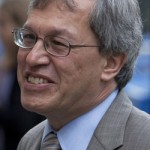Some Exam-Taking Advice from Professor Kircher
[Editor’s note: In this post, Professor John J. Kircher provides the first installment in our new series, “What are your best exam-taking tips for law students?”]
To begin with, always be careful to understand the “call” of the question. That is, what is the professor asking you to do? If he or she casts you in the role of the defense counsel and asks you to evaluate that side, don’t waste your time explaining what a great case the plaintiff has under the circumstances provided!
Also, if the question is jurisdiction-specific (e.g., Wisconsin), don’t waste your time and effort explaining the law of all other jurisdictions.
Finally, if you are uncertain about the answer to a particular question, go on to the other exam questions. It is better to have one unanswered question than to spin your wheels and waste time trying to figure out its answer only to have inadequate time to properly answer the remaining questions.
Erwin Chemerinsky to Speak in Milwaukee December 8
 Erwin Chemerinsky — Dean of the University of California, Irvine School of Law and a noted constitutional law scholar — will speak in Milwaukee on December 8 at the Pfister Hotel. The event is sponsored by the Milwaukee Lawyer Chapter of the American Constitution Society (ACS). Doors open at 5 pm.
Erwin Chemerinsky — Dean of the University of California, Irvine School of Law and a noted constitutional law scholar — will speak in Milwaukee on December 8 at the Pfister Hotel. The event is sponsored by the Milwaukee Lawyer Chapter of the American Constitution Society (ACS). Doors open at 5 pm.
Dean Chemerinsky is expected to speak on the impact of the Roberts Court and on the future of constitutional law. More information is available at the website of the American Constitution Society: http://www.acslaw.org/node/17692.

